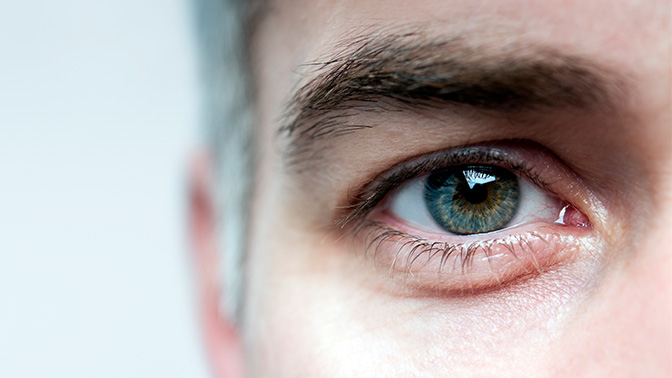
Vision researchers at the Donald K. Johnson Eye Institute have shed light on patient experiences surrounding a prosthetic device-based treatment for complex corneal conditions.
Corneal conditions, such as irregularly shaped corneas and corneal degeneration, are a leading cause of eye disease and vision loss. These conditions cause eye discomfort and impaired vision, and are commonly treated with artificial tears, anti-inflammatory drugs and specialized contact lenses. Patients with severe conditions that do not respond to traditional treatments have recently benefitted from a new therapy called PROSE—Prosthetic Replacement of the Ocular Surface Ecosystem.
PROSE involves daily use of a custom-designed lens that covers the cornea and rests on the white of the eye, called the sclera. The space between the lens and the cornea is filled with saline solution, which the patient replaces each time they insert the lens. PROSE treatment reduces eye discomfort, improves vision and promotes cornea healing.
PROSE is a relatively new treatment in Canada, and research is needed to better understand patient experiences surrounding PROSE device fitting and use.
A research team led by Krembil Clinician Investigators Drs. Allan Slomovic and Clara Chan analyzed medical records from 78 adults who underwent PROSE device fitting at the Kensington Eye Institute in Toronto. The team analyzed what symptoms and diagnoses led to PROSE treatment, previous devices used and vision improvements that patients experienced with PROSE.
The researchers found that doctors recommended PROSE for patients with a variety of complex corneal conditions. Prior to PROSE treatment, patients commonly experienced blurry vision, light sensitivity, eye pain and glare and saw rainbows around lights. Most patients had previously tried conventional contact lenses, but these lenses often failed to improve vision or were uncomfortable.
In addition to identifying common diagnoses and symptoms leading to PROSE treatment, the researchers found that PROSE significantly improved visual acuity—the sharpness or clarity of one’s vision. The researchers also found that patients could comfortably wear the PROSE device for long periods of time, often for at least five hours each day.
“PROSE is an effective treatment for patients who do not benefit from traditional therapies,” says Dr. Chan. “Reducing the debilitating eye pain and vision loss associated with corneal diseases can dramatically improve patients’ quality of life.”
This work was supported by the UHN Foundation.
Wong BM, Garg A, Trinh T, Mimouni M, Ramdass S, Liao J, Chandrakumar M, Chan CC, Slomovic AR. Diagnoses and Outcomes of Prosthetic Replacement of the Ocular Surface Ecosystem Treatment-A Canadian Experience. Eye Contact Lens. 2021 Mar 16. doi: 10.1097/ICL.0000000000000779.

Dr. Allan Slomovic (left) and Dr. Clara Chan (right) are Clinician Investigators at the Donald K. Johnson Eye Institute.




